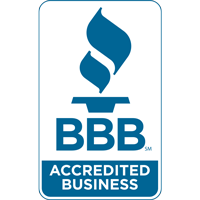We all like saving money on our monthly utility bills, but you should know there’s a way to keep costs down, even when you’re out of the house.
The secret is your thermostat. By learning more about its special features and settings, you can help the thermostat plan for your preferred temperatures. That means you can have different temperature settings for when you’re home, away or even when you’re asleep.
With a few simple adjustments, you’ll be able to enjoy comfortable temperatures while keeping more money in your pocket. Check out our guide on how your thermostat can save you money in the summer:
While at Home
Whenever you’re at home, you want to enjoy a comfortable temperature. For the most part, you probably have your thermostat lower in the summer if you’re indoors to make the most of the cool air.
But the most energy-efficient temperatures for the summer is usually between 78 and 80 degrees Fahrenheit. By adjusting things a few degrees, you can stay cool while still lowering your monthly energy bill.
While Out of the House
When setting the temperature for a vacation or other trip away from the house, the majority of homeowners will set the thermostat higher for while they’re gone.
For some homes, you can set the thermostat to temperatures as high as 88 degrees while no one is home before lowering it back to the sweet spot of 78-80 degrees after you return. This way, your air conditioning system isn’t working around the clock to provide cooling for a bunch of empty rooms.
While Sleeping
To enjoy a good night’s sleep during the summer, you want your thermostat set at a comfortable temperature. A good rule of thumb is between 68-72 degrees Fahrenheit. You won’t have to worry about getting too hot or too cold while you’re trying to sleep.
Additional Ways to Reduce Energy Use:
- Put in a smart thermostat: Switching to a smart thermostat in the summer can lower energy costs since it can plan your temperature adjustments according to your lifestyle and personal preferences. They can lower the temperature while you are home or sleeping, before allowing it to get warmer when the house is empty. With models like the Lennox iComfort, you can adjust the temperature remotely through your smartphone, tablet or laptop. Scheduling smart thermostat installation in your Pacheco home can be the simplest strategy for maintaining comfortable, yet energy-efficient temperatures no matter where you are.
- Update your existing HVAC system: A high-efficiency HVAC system can save money in the long run. If a system boasts high energy efficiency, you can also count on lower utility bills since more efficient equipment requires less energy to reach your preferred temperatures. Air conditioning installation in Pacheco is a breeze for experienced professionals like Clean Air HVAC.
- Stay on top of routine AC maintenance: Hiring a skilled professional to perform regular air conditioning maintenance in Pacheco can have a serious effect on your total monthly energy use. With regular cleaning of the coils, checking for damage and clearing air vents of dust and debris, you may notice your HVAC system run more efficiently. More efficient operation reduces strain on important or delicate components and lowers operational costs, resulting in lower energy usage and subsequently, smaller bills.
- Replace your air filter regularly: Cleaning or replacing the air filter regularly saves money by improving airflow. When filters are old and less effective, an AC unit has to work harder, and the strain can reduce the system’s life span and lead to breakdowns.
- Check your attic insulation: Insulation is a vital part of maintaining an energy-efficient home, keeping the hot air outside and the cool air inside during the summer. The North American Insulation Manufacturers Association (NAIMA) offers an official recommendation stating homeowners in souther states should install at least 13-14 inches of insulation, while states further north need 16-18 inches.
- Check your air ducts: A leak in the air ducts could increase your energy bills much more than 20 percent, plus it can affect equipment such as your water heater, clothes dryer and other appliances throughout your home. Checking your ductwork for leaks and sealing them can help with both these issues.
- Seal all other leaky spots in your home: Sealing up other leaks in your home with caulk, foam sealant or weather-stripping can help keep it cooler on hot summer days. It’s also important to check for any gaps around windows, doors and even outdoor fixtures. Making time to seal leaks now can help you save a lot in the long term.


